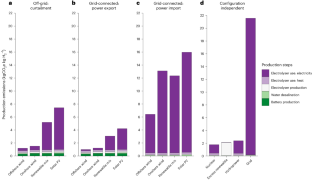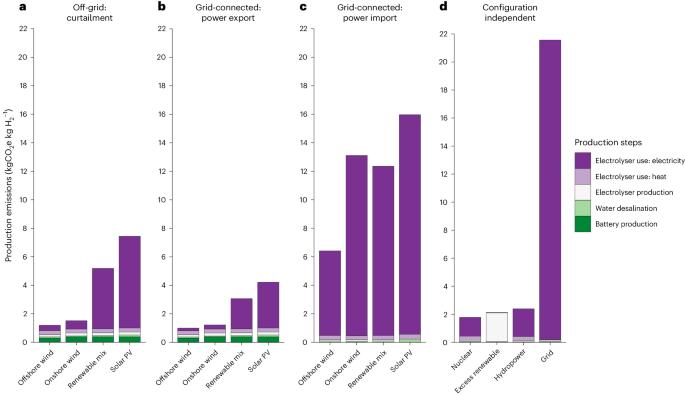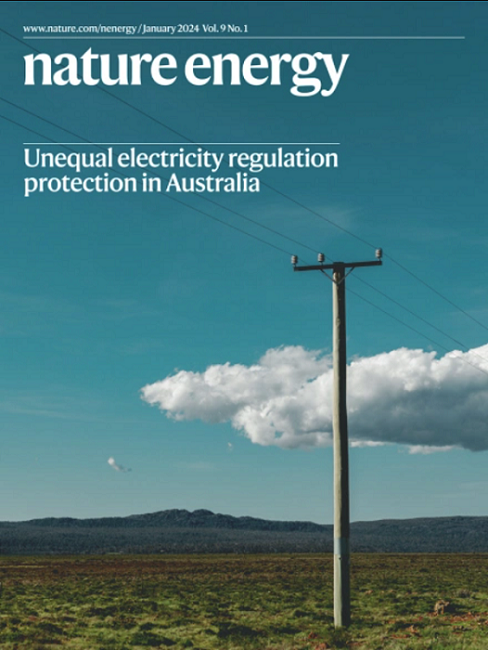绿色氢气生产和运输的全球温室气体排放量
IF 60.1
1区 材料科学
Q1 ENERGY & FUELS
引用次数: 0
摘要
根据设想,大规模引入绿色氢气将在实现温室气体净零排放方面发挥重要作用。然而,绿色氢气的生产和运输本身并不是无排放的。在此,我们对 72 个国家的 1025 个规划中的绿色制氢设施进行了生命周期温室气体排放评估,涵盖了不同的电解槽技术和可再生能源。我们证明,目前的法规不包括可再生能源、组件制造和氢气泄漏的生命周期排放,给人一种绿色氢能可以轻松达到排放阈值的错误印象。通过评估不同的氢气生产配置,我们发现最乐观配置的生产排放量中值为 2.9 千克二氧化碳当量(CO2e)千克氢气-1(0.8-4.6 千克二氧化碳当量千克氢气-1,95% 置信区间)。如果加上 1000 公里的管道运输或液氢运输,则每千克 H2-1 的二氧化碳当量将分别增加 1.5 或 1.8 千克。我们的结论是,要实现低排放绿色氢气的规模化生产,需要精心选择生产配置,并在供应链上实现大幅减排。本文章由计算机程序翻译,如有差异,请以英文原文为准。


Worldwide greenhouse gas emissions of green hydrogen production and transport
Large-scale introduction of green hydrogen is envisioned to play an important role in reaching net-zero greenhouse gas emissions. The production and transport of green hydrogen itself is, however, not free from emissions. Here we assess the life-cycle greenhouse gas emissions for 1,025 planned green hydrogen facilities, covering different electrolyser technologies and renewable electricity sources in 72 countries. We demonstrate that the current exclusion of life-cycle emissions of renewables, component manufacturing and hydrogen leakage in regulations gives a false impression that green hydrogen can easily meet emission thresholds. Evaluating different hydrogen production configurations, we find median production emissions in the most optimistic configuration of 2.9 kg CO2 equivalents (CO2e) kg H2−1 (0.8–4.6 kgCO2e kg H2−1, 95% confidence interval). Including 1,000 km transport via pipeline or liquid hydrogen shipping adds another 1.5 or 1.8 kgCO2e kg H2−1, respectively. We conclude that achieving low-emission green hydrogen at scale requires well-chosen production configurations with substantial emission reductions along the supply chain. This study assesses the life-cycle greenhouse gas emissions for 1,025 planned green hydrogen facilities covering diverse technologies and renewable electricity sources in 72 countries, noting that well-chosen production configurations are central to green hydrogen.
求助全文
通过发布文献求助,成功后即可免费获取论文全文。
去求助
来源期刊

Nature Energy
Energy-Energy Engineering and Power Technology
CiteScore
75.10
自引率
1.10%
发文量
193
期刊介绍:
Nature Energy is a monthly, online-only journal committed to showcasing the most impactful research on energy, covering everything from its generation and distribution to the societal implications of energy technologies and policies.
With a focus on exploring all facets of the ongoing energy discourse, Nature Energy delves into topics such as energy generation, storage, distribution, management, and the societal impacts of energy technologies and policies. Emphasizing studies that push the boundaries of knowledge and contribute to the development of next-generation solutions, the journal serves as a platform for the exchange of ideas among stakeholders at the forefront of the energy sector.
Maintaining the hallmark standards of the Nature brand, Nature Energy boasts a dedicated team of professional editors, a rigorous peer-review process, meticulous copy-editing and production, rapid publication times, and editorial independence.
In addition to original research articles, Nature Energy also publishes a range of content types, including Comments, Perspectives, Reviews, News & Views, Features, and Correspondence, covering a diverse array of disciplines relevant to the field of energy.
 求助内容:
求助内容: 应助结果提醒方式:
应助结果提醒方式:


